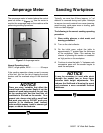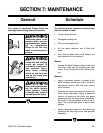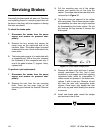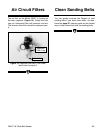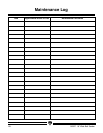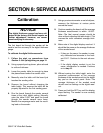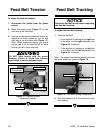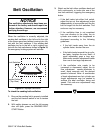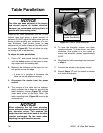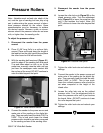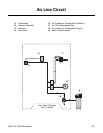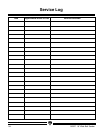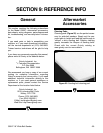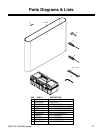
-30-
G0527 18" Wide Belt Sander
NOTICE
The table has been adjusted at the factory
and should require no further attention.
However, we recommend verifying that it is
parallel with the sanding roller.
NOTICE
When adjusting the left front elevation
screw, make the same adjustment to the left
rear elevation screw. This ensures the
height from the front to the back of the table
remains unchanged. Do the same when
adjusting the right elevation screws.
Table Parallelism
Adjusting the table parallelism can be a very
tedious task that takes a great amount of
patience. DO NOT adjust the table unless you are
having trouble sanding your workpiece to a uni-
form thickness. Take precise notes on any
adjustments you make to any of the table eleva-
tion screws (Figure 20). This will allow the origi-
nal setting to be re-established.
To adjust the table parallelism:
1. Pass a 24" wide board through the sander
until the entire surface of the board is mak-
ing contact with the sanding belt.
2. Measure the thickness of the board at vari-
ous points around the edge.
— If there is a variation of thickness, the
table can be adjusted accordingly.
3. Disconnect the sander from the power
source!
4. The corners of the table can be indepen-
dently adjusted up or down by spinning the
table elevation screws (Figure 20) located
under each corner of the table. Note—The
table mounting bolts (Figure 29) need to be
removed first.
5. To raise the elevation screws, turn them
counterclockwise. To lower them, turn them
clockwise. One quarter of a turn raises or
lowers the elevation screws approximately
0.020".
6. Retighten the table mounting bolts loosened
in step 4.
7. Connect the sander to the power source.
8. Repeat Steps 1-7 until the board is sanded
to a uniform thickness.
Figure 20. View of table underside.
Table Mounting Bolts
Elevation Screws
(Inside Dust Boots)



